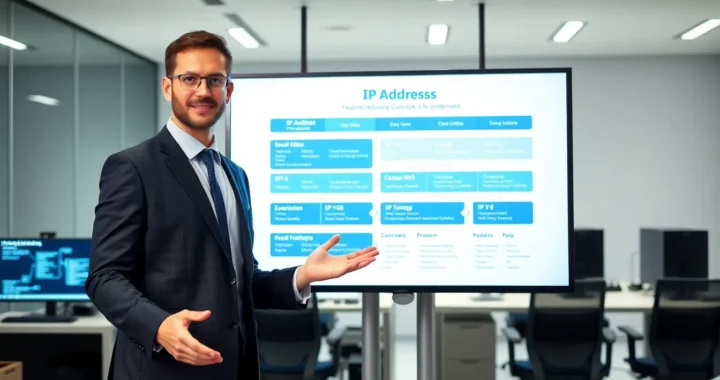
Everything You Should Know About IR Security
IR security focuses on protecting your network, systems, and data from digital threats. It involves identifying vulnerabilities, monitoring for suspicious activity, and responding to attacks.
Businesses face constant threats from malware, phishing, ransomware, and insider attacks. A strong IR security framework reduces risk and minimizes damage.
Your goal is to detect issues early and respond quickly. Regular updates, network segmentation, and employee training strengthen your defenses. You should view IR security as a continuous process, not a one-time effort.
Types of IR Threats
Threats to your infrastructure fall into several categories. Malware includes viruses, worms, and trojans designed to disrupt operations.
Phishing attacks target employees to gain access to credentials or sensitive data. Ransomware encrypts files and demands payment for release. Insider threats come from employees with access to systems, either maliciously or through negligence.
Each threat requires a specific response strategy. Monitoring logs, auditing permissions, and using endpoint protection helps identify attacks. You need to stay aware of evolving threats and adapt defenses accordingly.
Role of IR Services
IR services provide expertise and tools to handle security incidents efficiently. These services help you detect breaches, contain attacks, and restore systems. IR services include forensic analysis to understand how attacks occurred.
They guide you in creating an incident response plan tailored to your organization. Partnering with IR services improves response times and reduces operational impact.
They also offer training for your team to recognize and respond to threats. Outsourcing some functions allows you to focus on business priorities while maintaining security.
Incident Response Planning
An effective incident response plan outlines procedures for responding to security events. It identifies responsible personnel, communication channels, and decision-making processes.
You should define incident types, severity levels, and escalation paths. Regular testing of the plan ensures that everyone knows their role. You should update the plan based on lessons learned from past incidents.
Clear documentation and structured workflows reduce confusion during attacks. A well-prepared team can limit downtime and data loss significantly.

Detection and Monitoring
Early detection is critical for reducing damage. Continuous monitoring of networks, endpoints, and logs helps identify abnormal activity.
Tools like intrusion detection systems, SIEM platforms, and threat intelligence feeds provide real-time alerts.
You need to configure alerts to focus on high-priority risks. Regularly review logs to spot patterns or recurring threats. Detection combined with monitoring enables proactive mitigation before attacks escalate. The faster you detect, the faster you respond.
Containment Strategies
Containment prevents attacks from spreading and limits damage. Isolation of affected systems stops malware from reaching other devices.
Disabling compromised accounts prevents unauthorized access. You should have predefined containment procedures for each type of incident. Proper containment reduces recovery time and protects critical assets. Immediate action can save costs associated with data loss and downtime.
Eradication and Recovery
After containment, eradicate the root cause of the incident. Remove malware, patch vulnerabilities, and reset compromised accounts.
Recovery involves restoring data from backups and validating system integrity. Documenting the process helps in post-incident analysis. Your goal is to return operations to normal quickly and securely. Verify that no residual threats remain to prevent reinfection.
Communication and Reporting
Clear communication is essential during and after an incident. Notify affected teams and stakeholders promptly. Provide concise updates on actions taken and next steps.
Reporting should include technical details and business impact. Regulatory compliance often requires formal incident reporting.
Accurate documentation supports audits and future prevention strategies. You should maintain transparency without exposing sensitive details publicly.
Training and Awareness
Employee training reduces risk from human error. Teach staff to recognize phishing attempts, suspicious links, and unauthorized access.
Conduct regular drills to reinforce incident response procedures. Awareness programs improve compliance and reduce attack vectors.
You should also train your IT team on emerging threats and response techniques. A knowledgeable workforce strengthens your overall IR security posture.
Continuous Improvement
IR security requires ongoing evaluation and improvement. After each incident, review response effectiveness and update procedures.
Analyze new threat intelligence to adapt defenses. Periodically audit systems and policies for vulnerabilities. You should integrate lessons learned into training and planning.
Continuous improvement ensures your security measures remain relevant and effective. This proactive approach reduces exposure and enhances resilience.
Conclusion
IR security protects your business from threats and minimizes operational impact. Implementing strong detection, response, and recovery strategies keeps systems secure.
Partnering with IR services enhances efficiency and expertise. Regular training, monitoring, and plan updates maintain resilience.
Continuous improvement ensures your defenses adapt to evolving threats. Focusing on IR security gives your business the structure and readiness needed to respond effectively to any incident.





